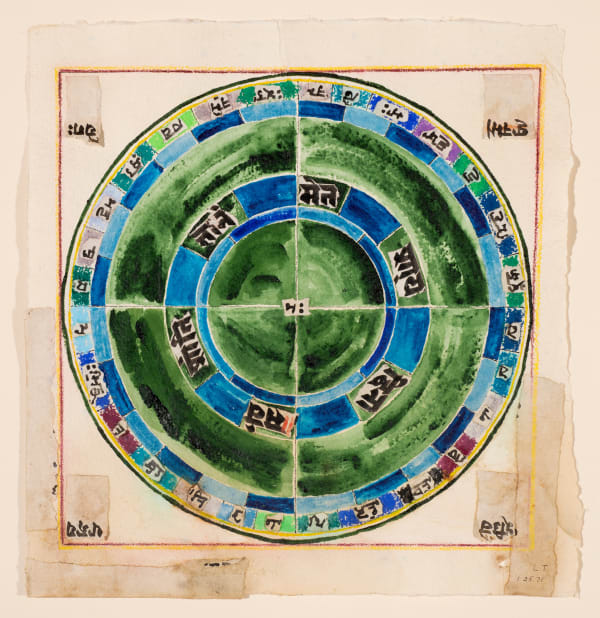Lenore Tawney US, 1907-2007
“You first have to be in touch with yourself inside very deeply in order to do something, to discover this place is our aim. I want to be under the leaf, to be quiet until I find my true self. I sometimes think of my work as breath.”
– Lenore Tawney
Lenore Tawney, original name Leonora Agnes Gallagher, was an American artist whose compositions helped transform weaving from an underappreciated craft into a new form of visual art.
Leonora Gallagher changed her first name to Lenore, which had fewer letters, when she was a first grader. Her 1941 marriage to George Tawney, a psychologist, ended after 18 months with his death. She attended the University of Illinois from 1943 to 1945 and then, while supporting herself as a proofreader for a legal publisher, took night courses in drawing, weaving, and sculpture at the Chicago Institute of Design (1946–48). After living in Paris from 1949 to 1951, during which time she traveled through Europe and into Morocco, Tawney briefly studied weaving in Penland, N.C.
In 1954 Lenore Tawney abandoned sculpture for weaving and in the process, transformed the ancient craft of the weaver into a new vocation—fiber art. Following an intensely personal and experimental path, in the late 1950s Tawney created gauzy tapestries in which areas of plain weave were juxtaposed with laid-in designs. Her improvisational pieces appeared like free-flowing drawings made of colorful yarns floating in space.
Moving from Chicago to Manhattan in 1961, she became part of the avant-garde world of the abstract expressionists, and soon began to restructure her tapestries into sculptural ‘woven forms.’ These groundbreaking weavings dispensed entirely with a traditional rectangular format. In a startling departure from textile traditions, her tall, totemlike works were not set against a wall, but freely suspended in space. Often embellished with shells, beads, and fringes of feathers—and frequently composed of fibers of varying thickness and texture—these and other, smaller shield-like designs woven in the 1960s, remained spiritually expressive, sculptural weavings.
In 1964 Lenore Tawney created the first of a profusion of collages and assemblages made from found objects. After 1976, when she abandoned weaving altogether, these nontextile works became the primary focus of her art. Small in scale, the pieces were fashioned principally from pages taken from rare books and manuscripts on whose age-stained surfaces were affixed fragile birds’ eggs and skeletons, feathers, small animal bones, shells, pebbles, corks, and wooden forms. Like her weavings, Tawney’ s miniature collages display great sensitivity to the aesthetic properties of materials, but unlike the bolder woven works, they are intimate and quiescent pieces, containing elusive messages about the frailty and transiency of life, and the need to find inner peace.







